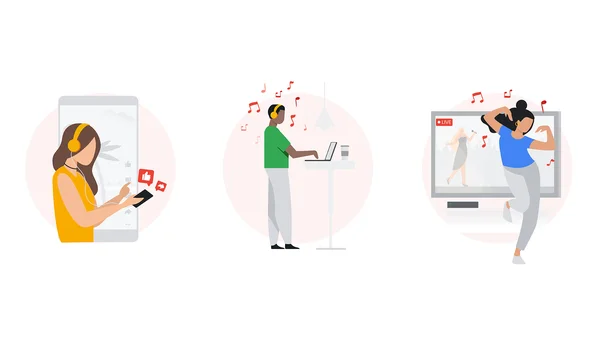 Reach Gen Z audiences across devices and formats with new music ad solutions.
Reach Gen Z audiences across devices and formats with new music ad solutions.
Reach Gen Z audiences where they are on YouTube with new music ad solutions
 Reach Gen Z audiences across devices and formats with new music ad solutions.
Reach Gen Z audiences across devices and formats with new music ad solutions.
 Reach Gen Z audiences across devices and formats with new music ad solutions.
Reach Gen Z audiences across devices and formats with new music ad solutions.
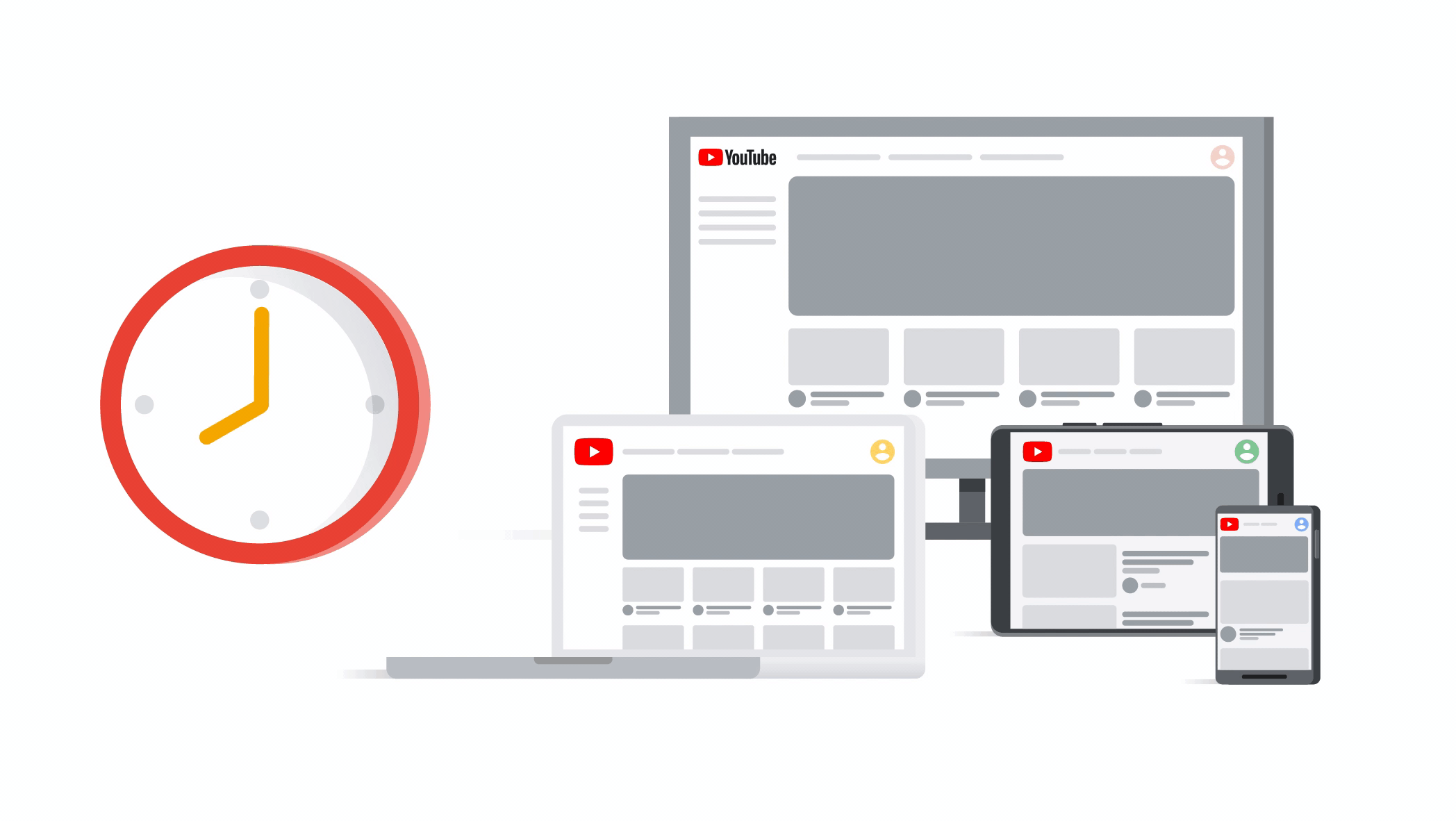 Marketers can reach people in big moments with the new YouTube Cost-Per-Hour Masthead.
Marketers can reach people in big moments with the new YouTube Cost-Per-Hour Masthead.
Achieving the right video ad frequency for both viewers and advertisers has always been a juggling act.
That challenge has only increased as linear TV viewership in the US has dropped from 100 million households in 2014 to a forecast of just 44 million by 2025. As reach declines, the number of times the audience sees an ad on TV is increasing. Seeing the same ad repeatedly can be a frustrating experience for viewers and proves wasteful for advertisers. On average, TV advertisers’ return on investment (ROI) decreased by 41% when frequency exceeded 6+ weekly impressions — which represents 46% of TV impressions served, according to a MMM meta analysis commissioned with Nielsen
Almost half of the linear TV impressions in our study were considered waste but the same study from Nielsen shows that brands can increase their average weekly frequency from one to three on YouTube with a consistent ROI
At YouTube, we are helping advertisers deliver a better advertising experience for viewers without any compromise in ROI. Based on this commitment, earlier this year we announced our frequency management solution on Display and Video 360 that allows marketers to manage the number of times people see their ads across YouTube and third-party networks. We’re now taking that a step further to revolutionize reach and frequency-buying on YouTube.
To help marketers harness this impact, we’re announcing the launch of Target frequency globally for YouTube campaigns. This will help advertisers optimize towards more precise reach and frequency, while ensuring that we continue to provide a suitable advertising experience for viewers. Target frequency allows advertisers to select a frequency goal of up to four per week and our systems will optimize towards maximum unique reach at that desired frequency.
We recently partnered with Triscuit to see how the brand can drive incremental impact to its reach campaigns with a frequency target. Triscuit's goal was to ensure that the brand stays top-of-mind with the consumer. The brand set up a Video experiment to determine the incremental ad recall that a weekly frequency of two could deliver. The Target frequency campaign achieved a 93% higher absolute ad recall lift compared to the non-frequency optimized campaign, at a 40% cheaper cost per lifted user.
Now advertisers can select the frequency target and our systems will optimize towards maximum unique reach at the frequency goal. With our built-in capping, campaigns deliver within a tight distribution range so viewers don’t see the ads too many times. In fact, over 95% of Target frequency campaigns on YouTube successfully achieved their frequency goals when set up following recommended best practices.
To start using a frequency optimized campaign, create a new video reach campaign with the Target frequency goal and select the desired weekly frequency.
Consumers navigate a widening variety of digital content from text to image to video—and they choose to spend their time in the experiences that feel most natural and intuitive for them. Working with Ipsos, we've identified three ways to keep your audience engaged across platforms throughout the holiday season, plus new retail-ready formats and creative tools to help you drive growth into the new year.
Over half of mobile consumers use Google and YouTube alongside other platforms when researching products or brands to try,
With product feeds for Discovery ads now available in beta, advertisers can show shoppers items based on their interests and intent. Specifically, individual retailers can now use lifestyle images and short text with their Google Merchant Center catalog to deliver more relevant ad experiences. For example, a consumer interested in fitness and fashion might see sneakers in a variety of colors and styles from a new brand in their content feed on YouTube or the Google app.
Puma switched to product feeds from standard Discovery ads to promote its catalog during key seasons, and saw a +46% increase in return-on-ad-spend while lowering costs by 19%. “Product feeds for Discovery ads offered more ways to expand our social-style assets across new platforms,” says Ashley Anderson, Senior Director of Digital Marketing at Puma. “Personalization and great performance made it easy to efficiently scale our spend.”
For tips to help you craft engaging Discovery ads with product feeds, see our creative best practices.
Keeping today's consumer engaged across platforms requires creative finesse at scale—and a multi-asset approach for campaigns like social and video to enable more visual and authentic storytelling. Nearly half of consumers say they are more likely to purchase a new product or brand they see in a video ad.
You can now scale your assets to Shorts, YouTube's new short-form video experience, to drive visual momentum with consumers watching everything from workout clips to recipe walkthroughs. You can make the most of this mobile canvas by bringing your best vertical video and image assets to the Shorts experience with Video action and now Discovery campaigns for images.
We've seen this asset-first creative approach across campaigns drive better results: more than 60% of advertisers who combine Video action campaigns with Discovery ads see incremental conversions at or below their original cost-per-action.
And last, but not least: building assets to scale doesn't have to mean relying on stock photos and generic visuals. 43% of consumers say that they are more likely to click on ads featuring people from a variety of backgrounds,
We're committed to helping you build more helpful and relevant ads that help consumers engage with your business. Check out our latest tools and resources below to learn how you can:
We hope these insights and creative tools help you drive growth now and in the new year with more effective, engaging ads.
People are streaming across different screens, video lengths and channels, and they’re coming to YouTube to watch it all.
Today, Gen Z viewers watch an almost even mix of long and short-form video content. And 59% of Gen Z consumers surveyed watch longer versions of videos that they discover on short-form video apps. Marketers have an opportunity to adapt their ad content and strategies to these evolving behaviors.
YouTube Shorts is an entirely mobile and vertical experience with over 30 billion daily views and 1.5 billion monthly logged-in users. By adding vertical video assets to Video action, App and Performance Max campaigns, which automatically scale to Shorts, marketers can participate directly in the Shorts environment and drive better results. In fact, we found that when advertisers added a vertical creative asset to their Video action campaigns, they delivered 10-20% more conversions per dollar on YouTube Shorts than campaigns that used landscape assets alone.
Take MercadoLibre, which hosts the largest online commerce and payments marketplace in Latin America. In August 2022, their vertical video assets drove 12% higher click-through rates and 9% higher view-through rates on mobile phones compared to landscape video ads in the same campaign.
So today, we’re introducing new solutions and creative guidelines to help advertisers of all sizes make effective vertical video ads.
We’re experimenting with a new machine learning technology that reformats landscape video ads into square or vertical formats based on how someone is watching YouTube. The machine learning model detects important elements in the landscape ad — such as faces, key objects, logos, text and motion — and breaks the video into distinct “scenes.” This ensures that important elements show up properly — centered, for example — in the reformatted video.
Businesses who may not have dedicated resources to create multiple assets can easily benefit from this technology, which automatically adapts their existing assets for several different formats. It’s currently available for App campaigns, and coming soon to Video action and Performance Max campaigns.
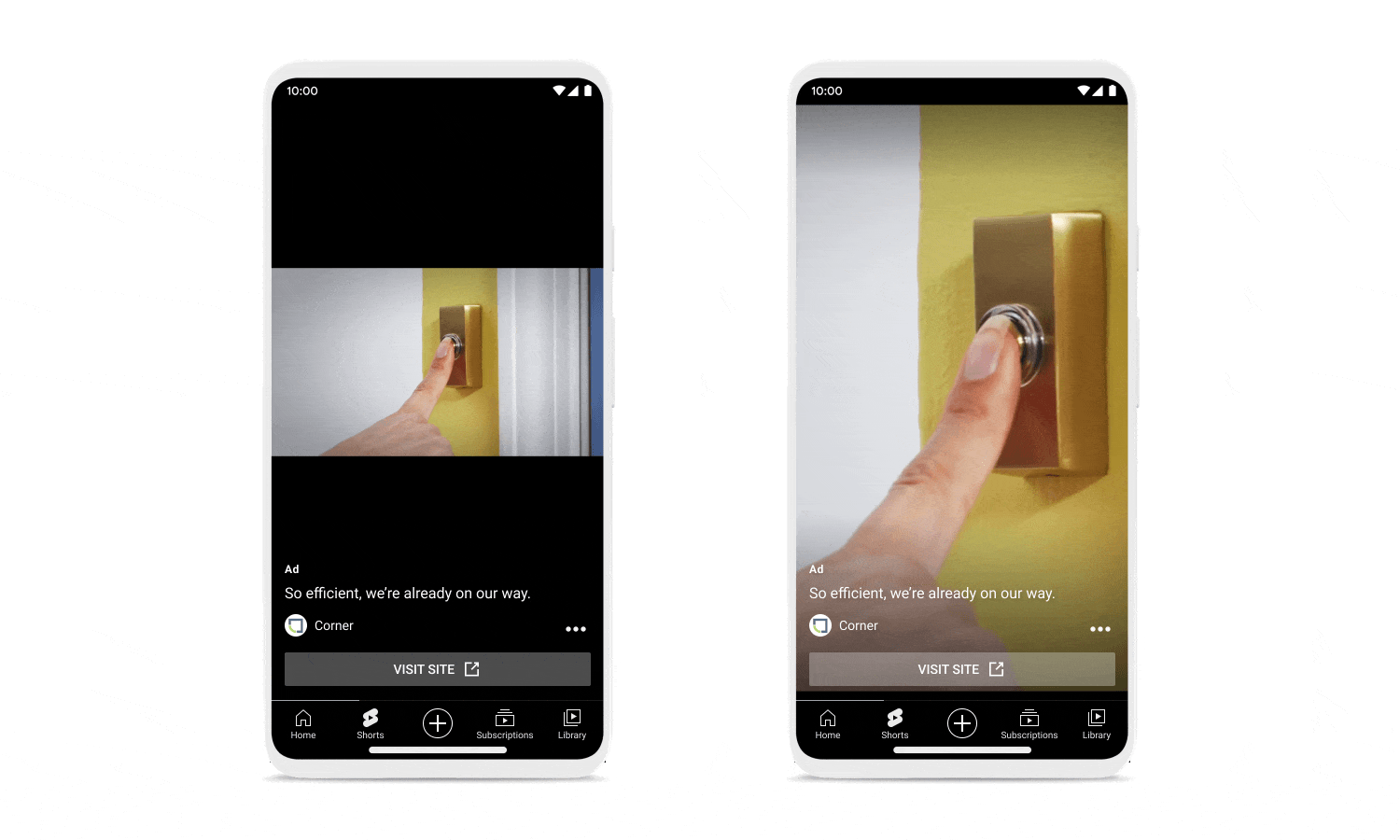
The reformatting solution allows advertisers to get the most out of their creative in a short amount of time.
Four new, customizable vertical video ad templates and one square template are now available in the video creation tool in Google Ads, located in the Asset Library. With just a few images and text, you can customize these templates to create a vertical or square ad for your brand in minutes.
These new templates follow creative best practices for YouTube and are built with specific considerations for a vertical viewing environment, with pacing, music tracks and transitions designed to make an impact. Check out this example.
We’ve also added a new set of vertical video ad templates to our auto-generated video offering, which creates vertical videos based on inputs you provide for a campaign, like text and images. This offering, which is available for App and Performance Max campaigns, ensures your campaigns are best positioned to benefit from the reach and improved performance of vertical video assets, even if you don’t have the time or resources to make a custom video.
For brands with the resources to shoot vertical video ads, there are a few creative considerations to keep in mind, in addition to our ABCD guidelines for creating effective YouTube ads. Google Creative Works, the team responsible for creative effectiveness research and guidelines, reviewed 2,000 global ads that ran on Shorts via Video action and App campaigns and uncovered three of the most successful strategies:
YouTube’s evolution from desktop to mobile to connected TV (CTV) allows us to reach a young and diverse audience you can’t find anywhere else. And for brands that want to develop content that resonates with all audiences — whether long-form videos on CTV or short-form content on mobile — YouTube remains uniquely positioned to meet their needs.
We want to make it easier to create effective ads for any Google Ads campaign. That starts with improving how images and videos are organized, accessed and created. With assets available in a central place, you can create ads and campaigns faster or swap content more easily when you need to make a change. And, if you’re missing a video needed to reach an important audience or business objective, you can now make one directly in Google Ads.
When you’re working with a team supporting several different campaigns, it’s important that everyone can access the content they need. With the asset library, images and videos are available to users across your Google Ads account in a visual-first experience. You and your colleagues can view, import and organize creative assets from both past and present campaigns. This makes sharing, collaboration and consistency easy.
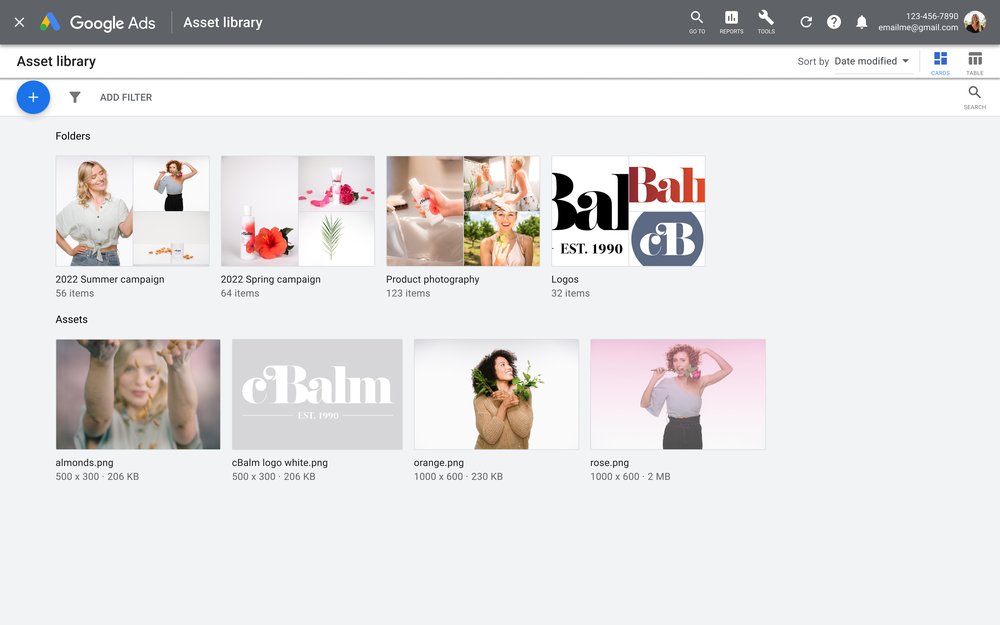
When it’s time to create or edit a campaign, you can access the library directly while building an ad. There’s no need to re-upload assets that you’re using across multiple campaigns. This experience is currently available in Performance Max, Discovery, App, Local, Display campaigns and some ad extensions.
If you use Google Ads Editor for campaign management, you’ll find an asset library there too. Similar to Google Ads, you can view and select content from your library to construct ads. And, you’ll soon be able to import images and videos to Google Ads directly from your Google Drive account.
We hope the asset library will help you spend less time managing or hunting down assets and more time developing creative ideas.
Video has a unique ability to captivate and influence people, especially on YouTube where billions of people come to watch content they love. Yet, many businesses struggle to unlock the full potential of video advertising because the creation process can often be lengthy, resource-intensive and complex. But, it doesn’t have to be!
With video ad creation now available in Google Ads, anyone can create a high-quality video ad in a matter of minutes. Start by selecting a template from our catalog and populating it with your brand colors, logo, images and text. Then, pick a music track from our audio library. Finally, use the video in any campaign that includes video, like a Video action campaign or a Performance Max campaign.
The templates are made for YouTube, meaning they have optimal pacing, brand and product placements and prominent calls to action. They are designed to help your ad stand out and drive results. With templates guiding you, the complexity of creating a video disappears and you can spend more time developing your messaging, audience insights or campaign strategy.
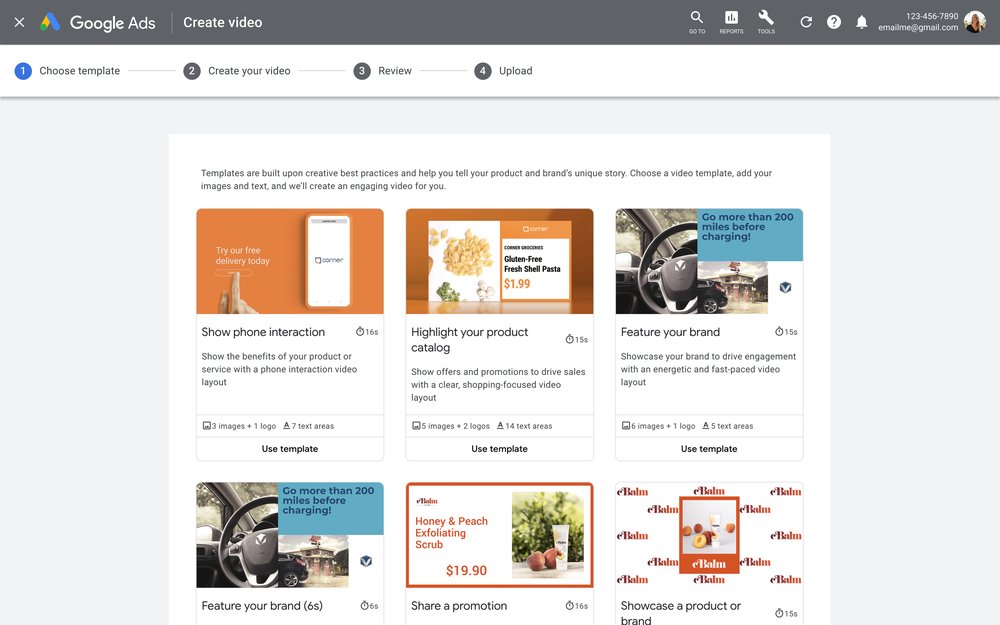
Invertironline is an Argentinian fintech company that turned to video creation in Google Ads for its efficiency and flexibility. “We always thought about YouTube, but we didn’t want to enter in the design loop until video creation in Google Ads appeared,” says Ariel Peralta, acquisition marketing lead of the financial technology company. With the help of templates, Invertironline reduced the time to produce video ads from two days to just 15 minutes. Compared to previous video ads, conversion rates doubled and the cost per acquisition was cut almost in half.
Another aspect of video creation we’d like to simplify is adding voice-over to videos. Audio is a critical factor in driving creative effectiveness on YouTube. The ABCD guidelines for effective video ads consistently show that videos with voice-over drive better performance. That’s why we’ve launched an easy way to generate a voice-over for YouTube videos, powered by Google’s industry-leading text-to-speech technology. This feature is accessible directly from the asset library.
Simply type in your script, select your preferred voice and with one click we’ll overlay your voice-over onto your video. We currently offer 7 voices in English (US) that are specifically created with advertising in mind. We also offer general text-to-speech voices in the following languages: Filipino, French, Hindi, Indonesian, Korean, Malaysian, Mandarin, Spanish and Swedish. We plan to add more ad voices and languages in the future.
In studies, creative is often the most significant driver of advertising return on investment. That’s why we’re so focused on helping you create and curate great assets for all of your Google Ads campaigns. We hope the asset library fosters more collaboration and smooth campaign deployment for your teams, freeing up time for you to develop creative ideas. With easier video ad creation and voice-over in Google Ads, we’d like to help you fully unlock the benefits of video advertising.
Learn more about the asset library, video creation and voice-over in the Google Ads Help Center.
We want to make it easier to create effective ads for any Google Ads campaign. That starts with improving how images and videos are organized, accessed and created. With assets available in a central place, you can create ads and campaigns faster or swap content more easily when you need to make a change. And, if you’re missing a video needed to reach an important audience or business objective, you can now make one directly in Google Ads.
When you’re working with a team supporting several different campaigns, it’s important that everyone can access the content they need. With the asset library, images and videos are available to users across your Google Ads account in a visual-first experience. You and your colleagues can view, import and organize creative assets from both past and present campaigns. This makes sharing, collaboration and consistency easy.

When it’s time to create or edit a campaign, you can access the library directly while building an ad. There’s no need to re-upload assets that you’re using across multiple campaigns. This experience is currently available in Performance Max, Discovery, App, Local, Display campaigns and some ad extensions.
If you use Google Ads Editor for campaign management, you’ll find an asset library there too. Similar to Google Ads, you can view and select content from your library to construct ads. And, you’ll soon be able to import images and videos to Google Ads directly from your Google Drive account.
We hope the asset library will help you spend less time managing or hunting down assets and more time developing creative ideas.
Video has a unique ability to captivate and influence people, especially on YouTube where billions of people come to watch content they love. Yet, many businesses struggle to unlock the full potential of video advertising because the creation process can often be lengthy, resource-intensive and complex. But, it doesn’t have to be!
With video ad creation now available in Google Ads, anyone can create a high-quality video ad in a matter of minutes. Start by selecting a template from our catalog and populating it with your brand colors, logo, images and text. Then, pick a music track from our audio library. Finally, use the video in any campaign that includes video, like a Video action campaign or a Performance Max campaign.
The templates are made for YouTube, meaning they have optimal pacing, brand and product placements and prominent calls to action. They are designed to help your ad stand out and drive results. With templates guiding you, the complexity of creating a video disappears and you can spend more time developing your messaging, audience insights or campaign strategy.

Invertironline is an Argentinian fintech company that turned to video creation in Google Ads for its efficiency and flexibility. “We always thought about YouTube, but we didn’t want to enter in the design loop until video creation in Google Ads appeared,” says Ariel Peralta, acquisition marketing lead of the financial technology company. With the help of templates, Invertironline reduced the time to produce video ads from two days to just 15 minutes. Compared to previous video ads, conversion rates doubled and the cost per acquisition was cut almost in half.
Another aspect of video creation we’d like to simplify is adding voice-over to videos. Audio is a critical factor in driving creative effectiveness on YouTube. The ABCD guidelines for effective video ads consistently show that videos with voice-over drive better performance. That’s why we’ve launched an easy way to generate a voice-over for YouTube videos, powered by Google’s industry-leading text-to-speech technology. This feature is accessible directly from the asset library.
Simply type in your script, select your preferred voice and with one click we’ll overlay your voice-over onto your video. We currently offer 7 voices in English (US) that are specifically created with advertising in mind. We also offer general text-to-speech voices in the following languages: Filipino, French, Hindi, Indonesian, Korean, Malaysian, Mandarin, Spanish and Swedish. We plan to add more ad voices and languages in the future.
In studies, creative is often the most significant driver of advertising return on investment. That’s why we’re so focused on helping you create and curate great assets for all of your Google Ads campaigns. We hope the asset library fosters more collaboration and smooth campaign deployment for your teams, freeing up time for you to develop creative ideas. With easier video ad creation and voice-over in Google Ads, we’d like to help you fully unlock the benefits of video advertising.
Learn more about the asset library, video creation and voice-over in the Google Ads Help Center.
Last year, we introduced a beta version of Ads Creative Studio as a destination for creative and media professionals to make more effective ads at scale. After a successful beta period, the platform is now globally available with more features to help teams collaborate, create and customize display and video ads.
Consumers expect — and prefer — relevant ads: 80% of viewers say they are more open to advertising or branded content relevant to them. But delivering this experience in practice, and at any kind of scale, can be complex and cost prohibitive, especially for video ads. For this reason, many marketers have had to forgo the effectiveness gains that come from highly relevant, customized advertising. That changes with ad customization in Ads Creative Studio.
Now you can create multiple or even hundreds of versions of a single display or video ad. They can be customized for different audiences, locations, languages or contexts. Simply tell us what element of the ad creative — like a product image, superimposed text or sound — you want to set as ‘swappable’ and provide different versions of that element based on a set of rules you create. The rules include the audiences you want to reach or contexts you want to match.
For example, you might make a rule to change the text overlay on your video creative based on whether your audience is in the market for cold-weather gear or warm-weather travel. We’ll apply the rules quickly to all videos and render the different versions in a matter of minutes. Then, you can create and share a preview that shows every video, along with the rules that apply to that video, with anyone who needs to review it.
These features are available today for video creatives and will soon be launching for display.
We want to make it easier for media and creative teams to work together and at the same speed. A set of new features ensure that projects made in Ads Creative Studio can be seamlessly shared to all of our media platforms — Google Ads, Display and Video 360 and Campaign Manager 360.
First, you can now export images from the Ads Creative Studio asset library to the Google Ads asset library of any linked account. That means users within Google Ads can easily find those images and use them when assembling creatives for Performance Max campaigns, for example. You can think of the Ads Creative Studio asset library as a single, consolidated home for all creative assets, which you can then share with multiple media accounts for activation.
And second, you can now connect an Ads Creative Studio account to Campaign Manager 360. Ads Creative Studio was already available in beta to Display & Video 360 customers. Today, everyone can upload, manage and export HTML5 creatives directly to either Campaign Manager 360 or Display & Video 360. And, soon, you’ll be able to export video creatives as well.
Ads Creative Studio has helped brands and agencies cut down on time and costs and facilitate collaboration between media and creative teams. Men in Green, a creative agency out of the Netherlands was able to cut its creative production time in half using Ads Creative Studio and Display and Video 360. By implementing the platform into its workflow, the agency was able to maintain strict quality control for multiple creative assets while having different designers work on them simultaneously.
PepsiCo wanted to increase associations of the bubly brand with different contexts like house parties, barbecues, sports viewing and more. The company ran an experiment using customized videos built in Ads Creative Studio to see if occasion-specific messages aimed at relevant audiences could drive higher brand lift. PepsiCo found that campaigns with creative showing social gathering and food pairing situations were most effective. The path to customization was smoother and more efficient and, with a single tool, the team was able to standardize processes across functions.
In another instance, General Motors South America wanted to boost brand awareness of the Cruze 5 model. The brand decided to customize beyond the basics and needed to produce 14 unique ads without sacrificing time, budget or resources. Using Ads Creative Studio, the brand reduced costs by 30% and the campaign saw a 56% increase in Google searches for “chevrolet cruze” and a reduction in cost per view of 32% compared to the industry benchmark.
Ads Creative Studio is built to provide full support for creative teams and to enhance collaboration, creative effectiveness and scale. To learn how to get started, visit the Ads Creative Studio Help Center.
Last year, we introduced a beta version of Ads Creative Studio as a destination for creative and media professionals to make more effective ads at scale. After a successful beta period, the platform is now globally available with more features to help teams collaborate, create and customize display and video ads.
Consumers expect — and prefer — relevant ads: 80% of viewers say they are more open to advertising or branded content relevant to them. But delivering this experience in practice, and at any kind of scale, can be complex and cost prohibitive, especially for video ads. For this reason, many marketers have had to forgo the effectiveness gains that come from highly relevant, customized advertising. That changes with ad customization in Ads Creative Studio.
Now you can create multiple or even hundreds of versions of a single display or video ad. They can be customized for different audiences, locations, languages or contexts. Simply tell us what element of the ad creative — like a product image, superimposed text or sound — you want to set as ‘swappable’ and provide different versions of that element based on a set of rules you create. The rules include the audiences you want to reach or contexts you want to match.
For example, you might make a rule to change the text overlay on your video creative based on whether your audience is in the market for cold-weather gear or warm-weather travel. We’ll apply the rules quickly to all videos and render the different versions in a matter of minutes. Then, you can create and share a preview that shows every video, along with the rules that apply to that video, with anyone who needs to review it.
These features are available today for video creatives and will soon be launching for display.
We want to make it easier for media and creative teams to work together and at the same speed. A set of new features ensure that projects made in Ads Creative Studio can be seamlessly shared to all of our media platforms — Google Ads, Display and Video 360 and Campaign Manager 360.
First, you can now export images from the Ads Creative Studio asset library to the Google Ads asset library of any linked account. That means users within Google Ads can easily find those images and use them when assembling creatives for Performance Max campaigns, for example. You can think of the Ads Creative Studio asset library as a single, consolidated home for all creative assets, which you can then share with multiple media accounts for activation.
And second, you can now connect an Ads Creative Studio account to Campaign Manager 360. Ads Creative Studio was already available in beta to Display & Video 360 customers. Today, everyone can upload, manage and export HTML5 creatives directly to either Campaign Manager 360 or Display & Video 360. And, soon, you’ll be able to export video creatives as well.
Ads Creative Studio has helped brands and agencies cut down on time and costs and facilitate collaboration between media and creative teams. Men in Green, a creative agency out of the Netherlands was able to cut its creative production time in half using Ads Creative Studio and Display and Video 360. By implementing the platform into its workflow, the agency was able to maintain strict quality control for multiple creative assets while having different designers work on them simultaneously.
PepsiCo wanted to increase associations of the bubly brand with different contexts like house parties, barbecues, sports viewing and more. The company ran an experiment using customized videos built in Ads Creative Studio to see if occasion-specific messages aimed at relevant audiences could drive higher brand lift. PepsiCo found that campaigns with creative showing social gathering and food pairing situations were most effective. The path to customization was smoother and more efficient and, with a single tool, the team was able to standardize processes across functions.
In another instance, General Motors South America wanted to boost brand awareness of the Cruze 5 model. The brand decided to customize beyond the basics and needed to produce 14 unique ads without sacrificing time, budget or resources. Using Ads Creative Studio, the brand reduced costs by 30% and the campaign saw a 56% increase in Google searches for “chevrolet cruze” and a reduction in cost per view of 32% compared to the industry benchmark.
Ads Creative Studio is built to provide full support for creative teams and to enhance collaboration, creative effectiveness and scale. To learn how to get started, visit the Ads Creative Studio Help Center.
Connected TV (CTV) has become the go-to spot for people to kick back and enjoy their favorite content. According to Nielsen, over 50% of ad-supported streaming watch time happens on YouTube CTV for people ages 18 and up.
It’s also helped advertisers reach their audiences in smarter and more efficient ways. But we know there are challenges — like the ability to effectively plan and measure cross media, from creator shows to live TV. So we've been focused on bringing better digital ad capabilities to CTVs to allow for consistent planning and measurement across platforms, while improving the viewer experience. And today, we’re sharing some of our newest solutions.
We’re partnering with Nielsen to help advertisers understand how their YouTube CTV and YouTube TV reach delivers in comparison to other services. New tools will also help advertisers measure their total audience reached by YouTube CTV and deliver an even stronger CTV viewing experience.
Last year, we launched Nielsen Digital Ad Ratings (DAR) and Comscore Campaign Ratings (CCR) to help you more easily measure your YouTube CTV campaigns alongside other media. Later this year, YouTube CTV and YouTube TV will be available in Nielsen Total Ad Ratings (TAR) in the U.S. This release will include deduplication of YouTube inventory across all platforms — CTV, computer, mobile and linear TV — to better compare YouTube reach to linear TV.
Later this year, YouTube CTV and YouTube TV will be available in Nielsen Total Ad Ratings (TAR) in the U.S.
You’ll also see CTV device metrics within your media mix model (MMM) data feed, which can help measure sales outcomes and share insights on the impact of your YouTube CTV investment. To make the data analysis process faster for clients and easier for our measurement partners, we’ve launched a new data platform for MMM providers and advertisers to request data, track the status of those requests and ingest data directly.
We know MMMs provide one of the most important litmus tests for any video platform — does it actually work? On the most important metrics, YouTube is driving strong business results for customers. According to an MMM meta-analysis Google commissioned with Nielsen, on average, YouTube CTV was 3.1 times more effective than TV across U.S. consumer packaged goods (CPG) MMMs that measured YouTube CTV and TV (2021).
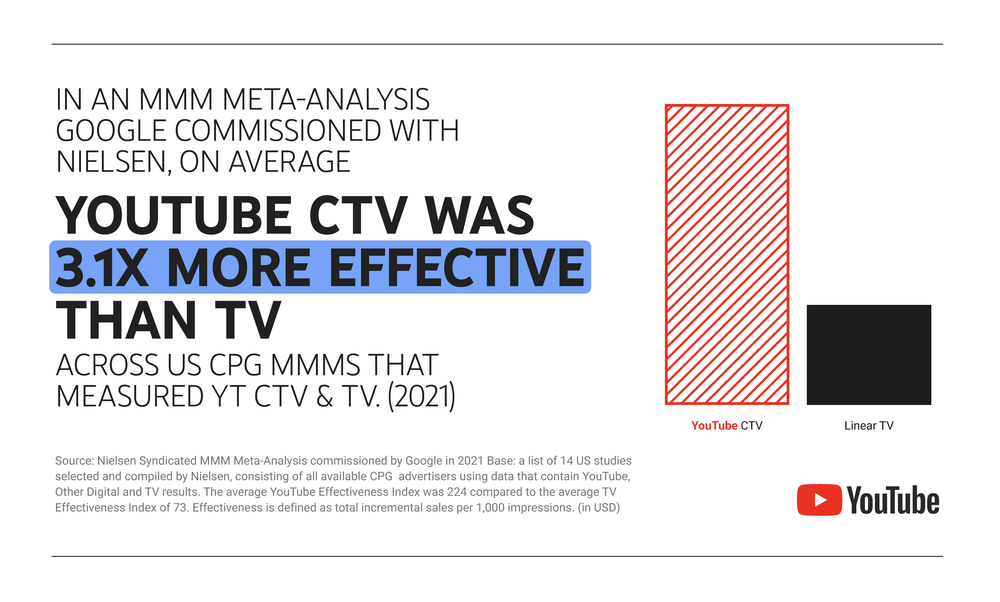
Just like the decades-old tradition of gathering around the TV set, people are watching YouTube with their friends and family. In a study with Nielsen, we found that 26% of the time, multiple 18+ viewers are watching YouTube together on the TV screen, compared to 22% on linear TV.
Accounting for multiple people, or “co-viewers,” has been a core part of TV measurement for years. To help you measure the same behavior with YouTube CTV and get an accurate picture of the total audience you’re reaching, co-viewing will be included in Nielsen's DAR guarantees ad reporting in the U.S. Advertisers will also have access to co-viewing metrics across Google’s planning and measurement solutions globally.
To help you measure the same behavior with YouTube CTV and get an accurate picture of the total audience you’re reaching, co-viewing will be included in Nielsen's DAR guarantees ad reporting in the U.S.
Whether you’re forecasting an upcoming campaign or reviewing post-campaign reports, you’ll soon see reach, frequency and an additional impression metric that accounts for all viewers on CTV. This means more accurate reach forecasts and campaign reports with an apples-to-apples comparison between YouTube and the rest of your linear and connected TV buy — ultimately helping you make smarter investment decisions. Our methodology is designed to meet the industry standard of co-viewing measurement. Learn more about how it works.
Co-viewing metrics will roll out globally across Google Ads and Display & Video 360 planning and measurement tools by the end of Q2 2022.
We know it’s not all about reach. You also want to reach the right audience at the right frequency. Last month, we announced a new CTV frequency solution that allows for a better viewer experience and more efficient use of your CTV media dollars.
For the first time with Display & Video 360, you can manage CTV ad frequency across YouTube, YouTube TV and other connected TV apps. This lowers your risk of triggering ad fatigue for viewers, while adding more reach for the same ad budget. Early results show that this new functionality also significantly improves media performance for advertisers.
For the first time with Display & Video 360, you can manage CTV ad frequency across YouTube, YouTube TV and other connected TV apps.
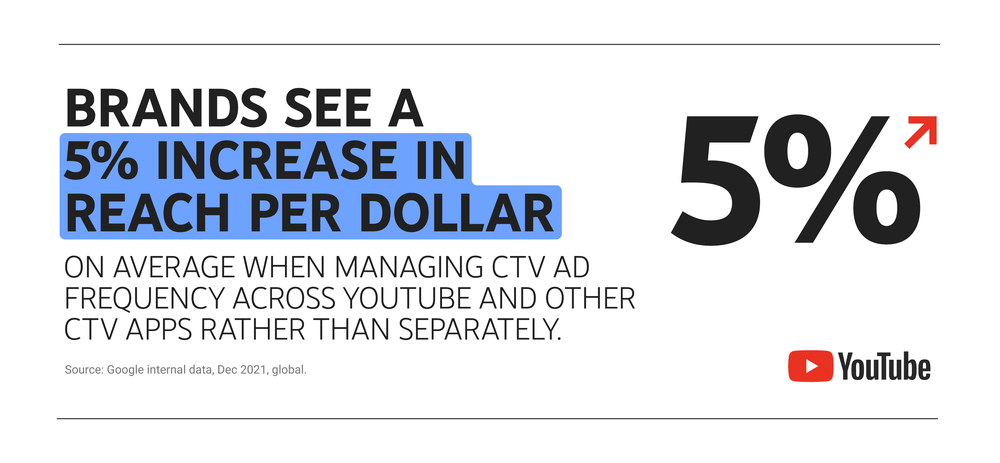
In addition to frequency management, you can use other Google audience solutions with YouTube CTV to help boost performance and reach the most relevant viewers for your brand.
Top brands are taking advantage of these digital-first capabilities to grow their business.
In 2021, DoorDash, alongside its agency Kepler Group, ran a six-week CTV campaign on YouTube to reach a large audience quickly, which ultimately drove a 50% incremental uplift in DoorDash driver sign-ups.
While viewers are watching the content they love on YouTube CTV, brands are driving real results. Reach out to your Google sales team to learn about YouTube CTV ads and these new planning and measurement solutions.